
Users who have just joined MacOS, there are quite a few questions regarding its use, especially if before it was done only with Windows OS. One of the primary tasks with which the newcomer may encounter is to change the language in the "apple" operating system. It is about how to do it, and will be told in our current article.
Switching Language on MacOS
First of all, we note that under the change of language, users often can mean one of two completely different tasks. The first one refers to the layout change, that is, the direct language input language, the second - to the interface, more precisely, its localization. Below will be described in detail about each of these options.Option 1: Change input language (layout)
Most domestic users have to use at least two linguistic layouts on a computer - Russian and English. Switch between them, provided that more than one language has already been activated in MacOS, quite simple.
- If there are two layouts in the system, switching between them is carried out by simultaneously pressing the "Command + Space" keys on the keyboard.
- If more than two languages are activated in the OS, it is necessary to add another key to the designable key - "Command + Option + Space".
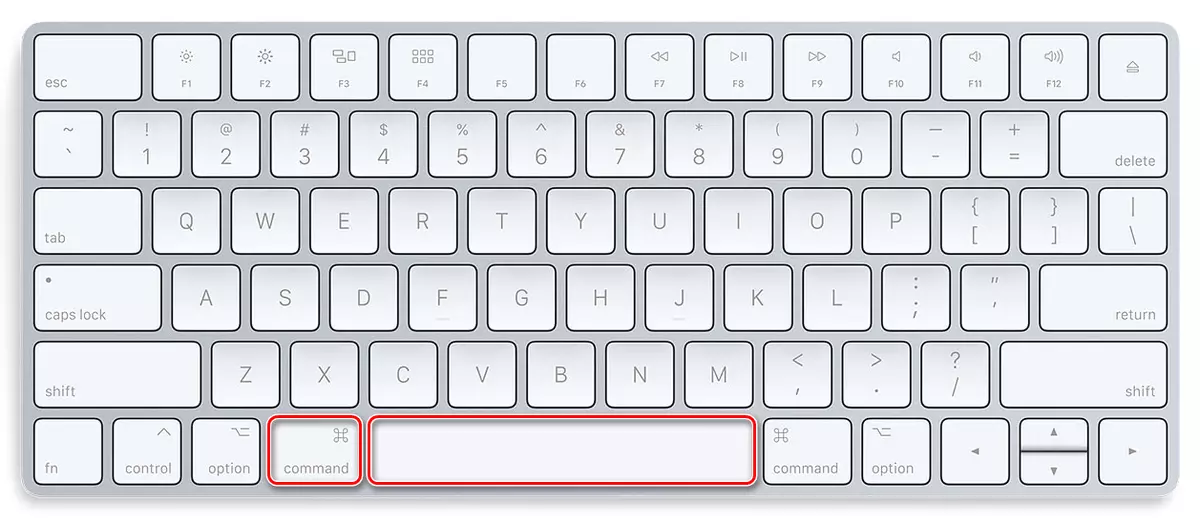
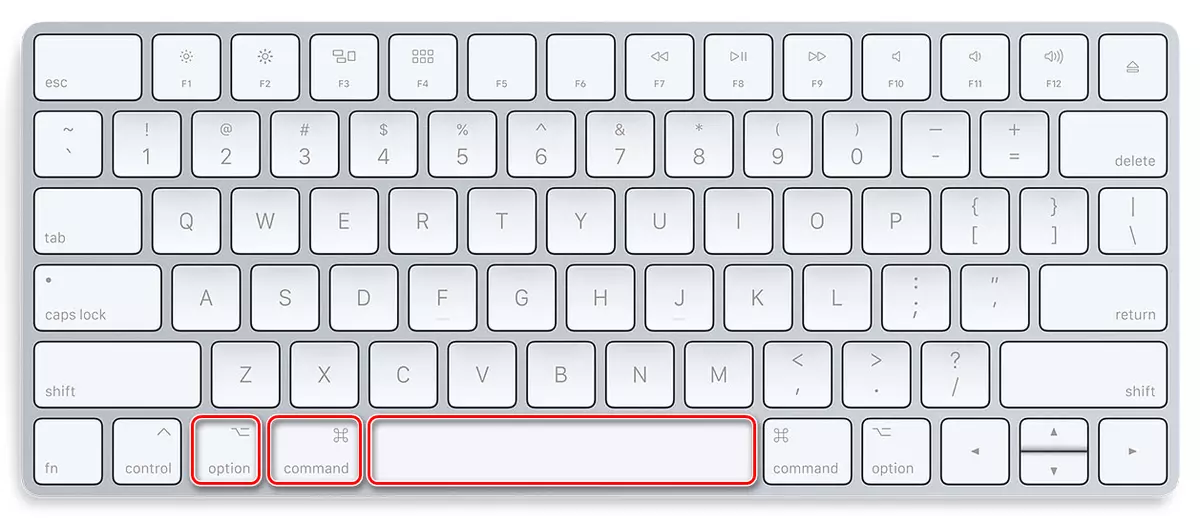
Important: The difference between key combinations "COMMAND + SPACE" and "COMMAND + OPTION + SPACE" Many may seem insignificant, but it is not. The first allows you to switch to the previous layout, and then return to the one that was used before it. That is, in cases where more than two linguistic layouts are used, using this combination, to the third, fourth, etc. You never get. Just here and comes to help "COMMAND + OPTION + SPACE" which allows you to switch between all the existing layouts in the order of their installation, that is, in a circle.
In addition, if two and more input languages have already been activated in Makos, you can switch between them with the mouse, literally in two clicks. To do this, find the flag icon on the taskbar (it will fit the country whose language is currently active in the system) and click on it, and then in a small pop-up left click or Trekpad, select the desired language.
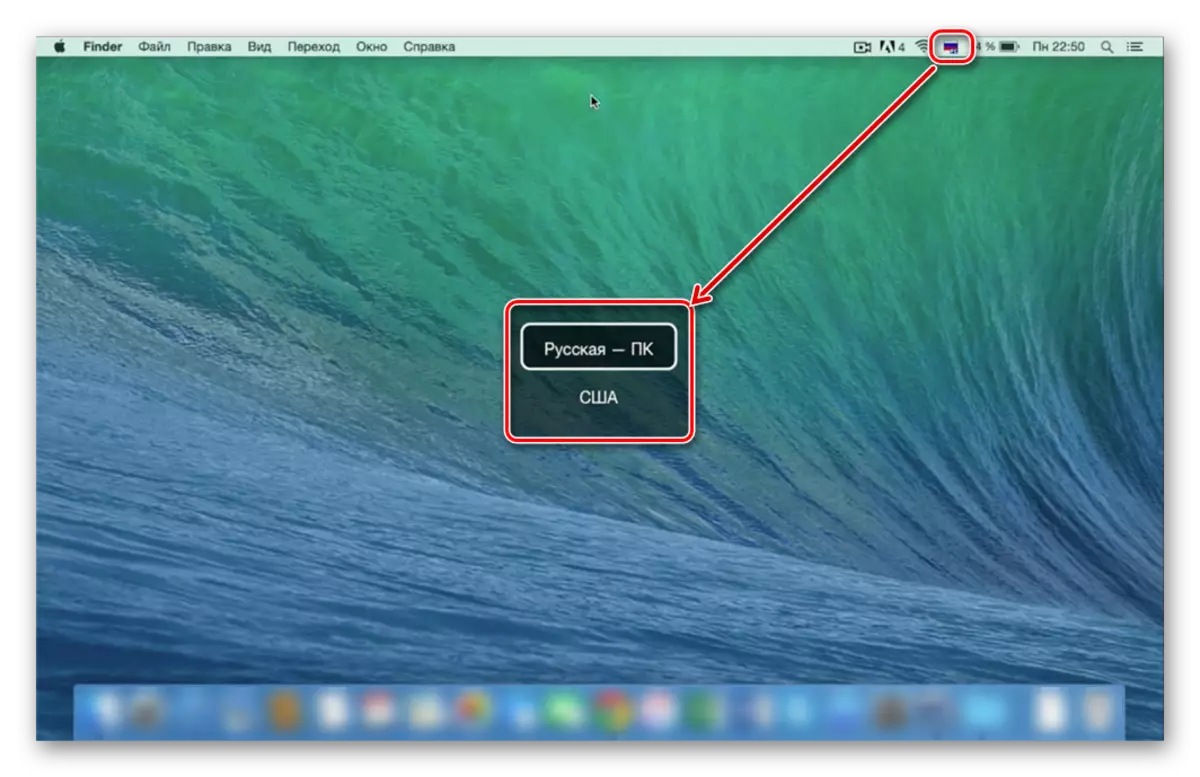
Which of the two ways indicated by us to choose to change the layout, solve only you. The first fastest and most convenient, but requires memorization of the combination, the second is intuitive, but takes more time. The elimination of possible problems (and on some versions of the OS may be described in the last part of this section.
Changing key combination
Some users prefer to be used to change the language layouts of the key combination other than those installed in MacOS by default. You can change them literally in several clicks.
- Open the OS menu and go to "System Settings".
- In the menu that appears, click on the "Keyboard" item.
- In the new window, move to the "Key Combination" tab.
- In the left side menu, click on the "Input Sources" item.
- Select the default Shortkat by pressing the LKM and enter (click on the keyboard) there is a new combination.
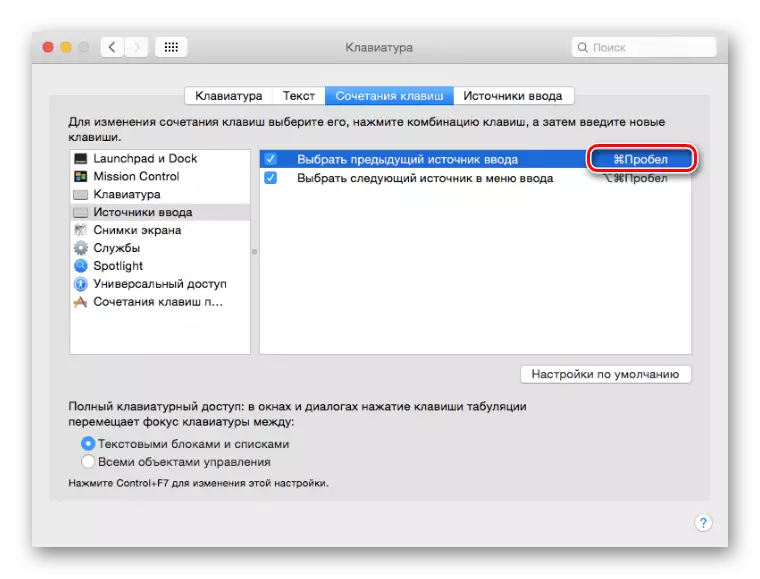
Note: By installing a new key combination, be careful and do not use the one that is already used in Makos to call some kind of command or perform certain actions.
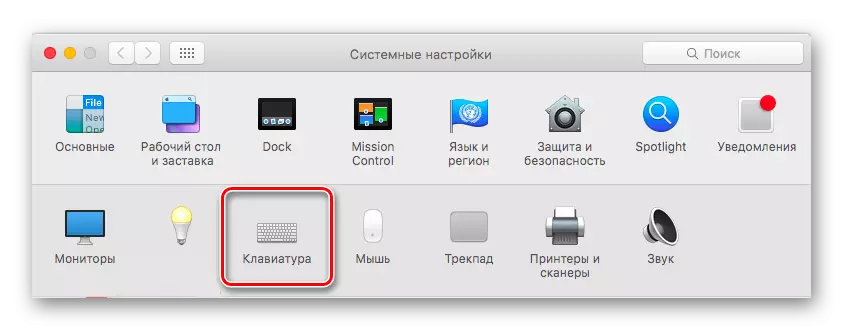
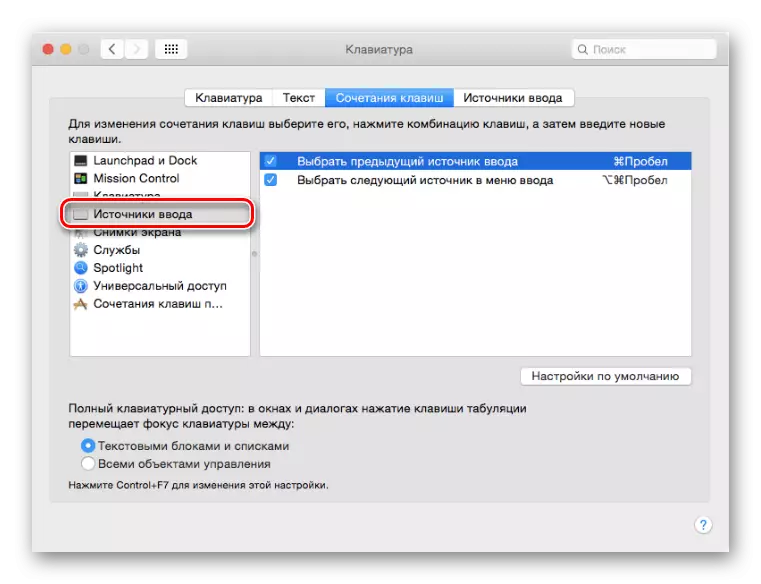
So simple and without much effort, you can change the key combination to quickly switch language layouts. By the way, the hot keys "Command + Space" and "Command + Option + Space" can be swapped in the same way. For those who often use three or more languages such a switch will be much more convenient.
Adding a new input language
It happens that the necessary language is initially absent in MAKSOS, and in this case it is necessary to add it manually. This is done in the system parameters.
- Open MacOS menu and select "System Settings" there.
- Go to the "Keyboard" section, and then switch to the "Input Source" tab.
- In the on-site input sources from the keyboard, select the desired layout, for example, Russian-PC, if you need to activate the Russian language.
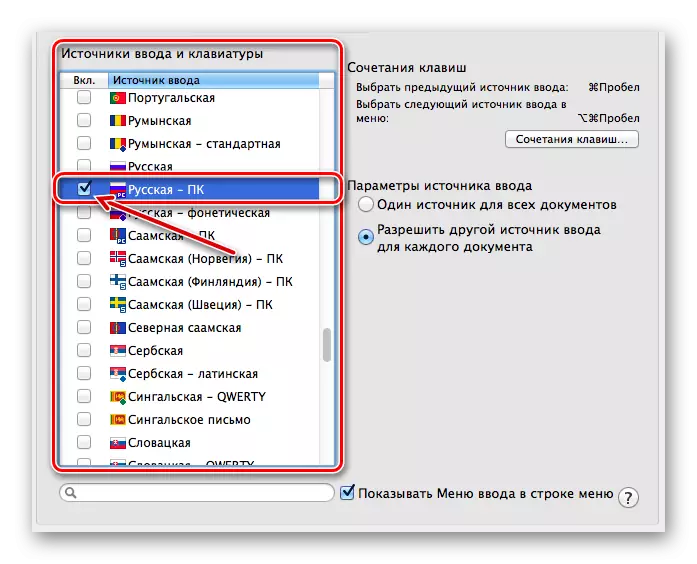
Note: In chapter "Input source" You can add any necessary layout or, on the contrary, to remove the one that you do not need, by installing or removing the checkbox opposite them.
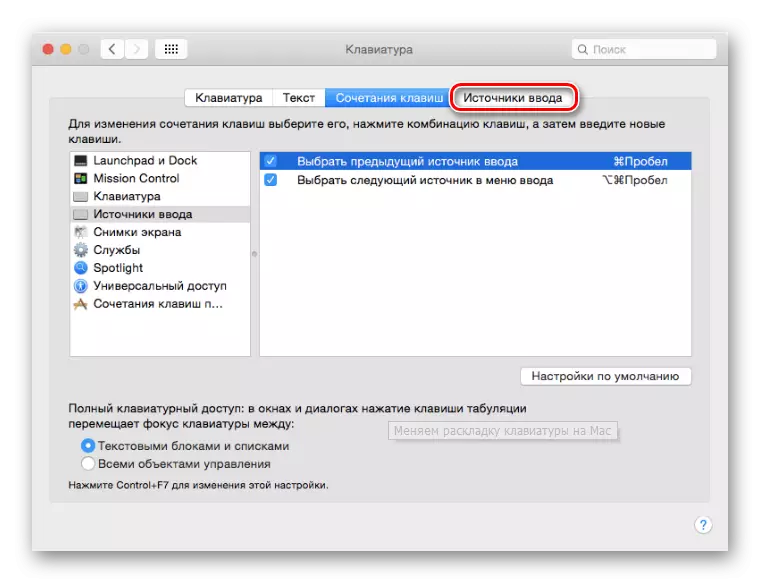
By adding the necessary language and / or removing the unnecessary, you can quickly switch between the available layouts using the above-mentioned key combinations, mouse or trackpad.
Solving common problems
As we have already told above, sometimes in the "apple" operating system there are problems with the change of layouts by means of hot keys. This manifests itself as follows - the language can not switch from the first time or not to switch at all. The reason for this is quite simple: in the old versions of MacS, the combination "CMD + SPACE" was responsible for calling the Spotlight menu, the SIRI voice helper in the new way.
If you do not want to change the key to switch to the key, you do not want, and you do not need Spotlight or Siri, you just need to disable this combination for them. If the presence of an assistant in the operating system plays an important role for you, you will have to change the standard combination to switch the language. About how to do this, we have already written above, here we will briefly tell about the deactivation of the combination to call "assistants".
Menu call deactivation Spotlight
- Call the Apple menu and open "System Settings" in it.
- Click on the "Keyboard" icon, in the window that opens, go to the "Key Combination" tab.
- In the list of menu items located on the right, find Spotlight and click on this item.
- In the main window, remove the checkbox from the point "Show Search Spotlight".
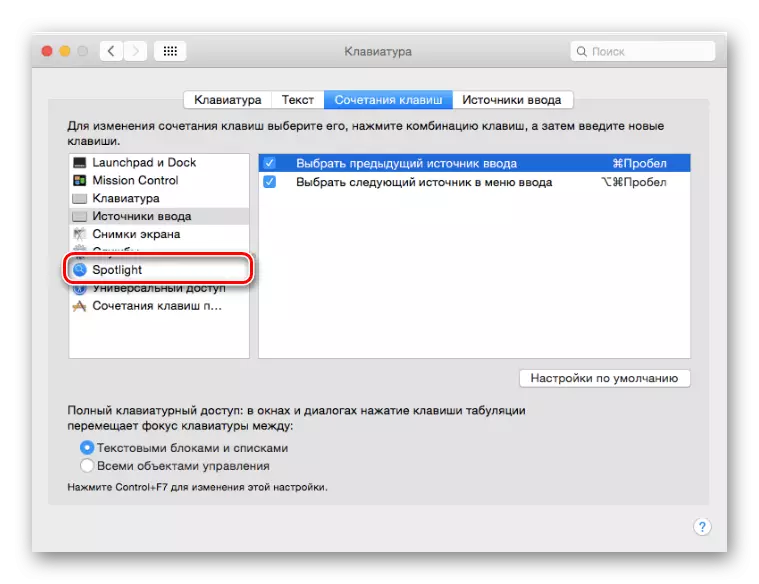
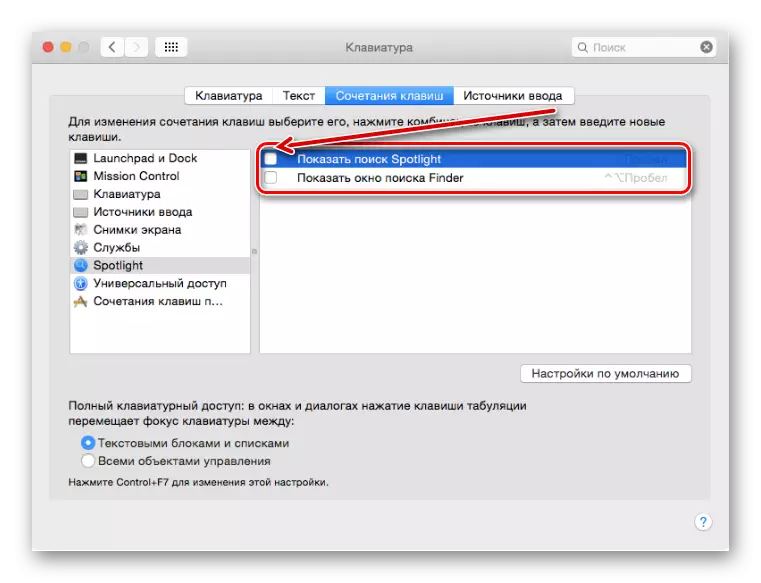
From this point on, the KMD + SPACE key combination will be disabled to call Spotlight. Perhaps it will be necessary to re-activate to change the language layout.
Deactivation of voice assistant Siri.
- Repeat the steps described in the first step above, but in the System Settings window, click on the Siri icon.
- Go to the "key combination" string and click on it. Select one of the available key combinations (different from "CMD + Space") or click "Configure" and enter your closure.
- To fully disable the voice assistant Siri (in this case, the previous step can be skipped) Uncheck the box opposite the "Enable Siri" item located under its icon.
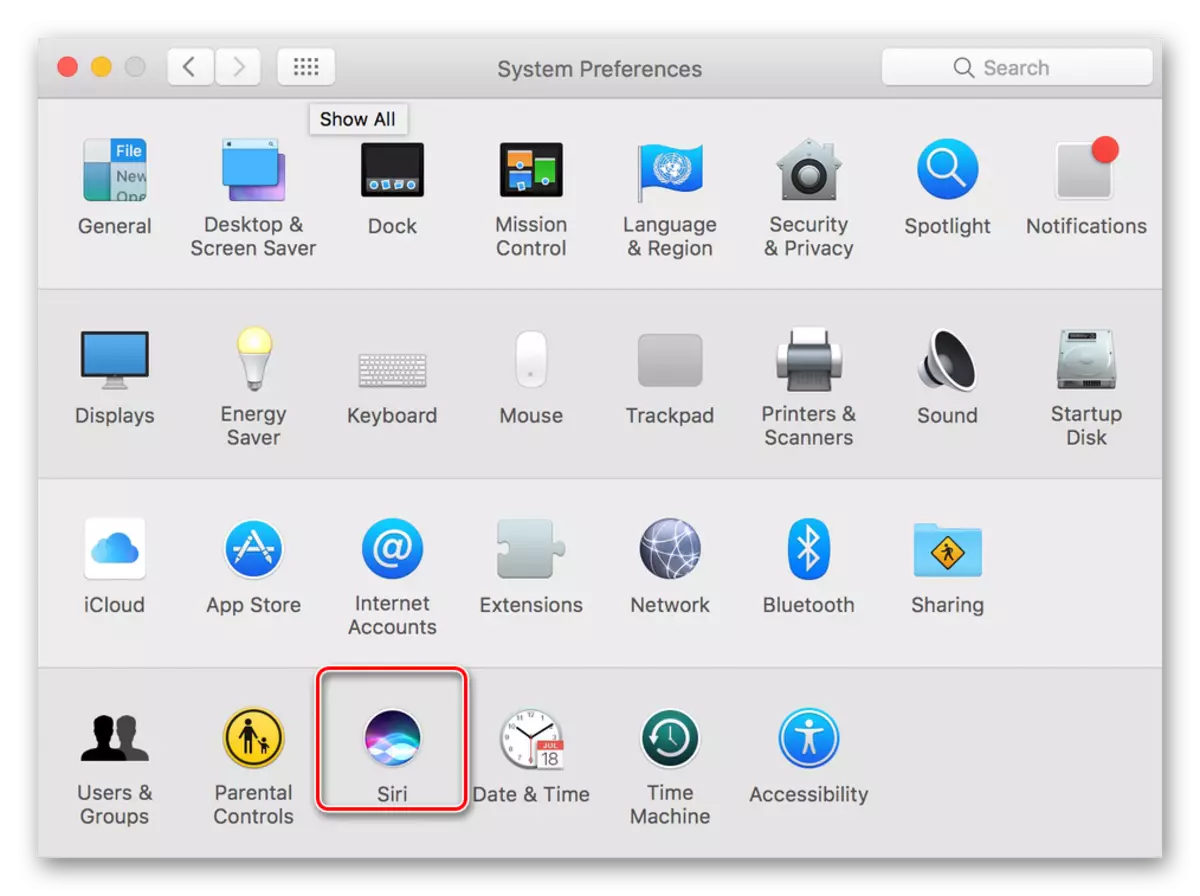

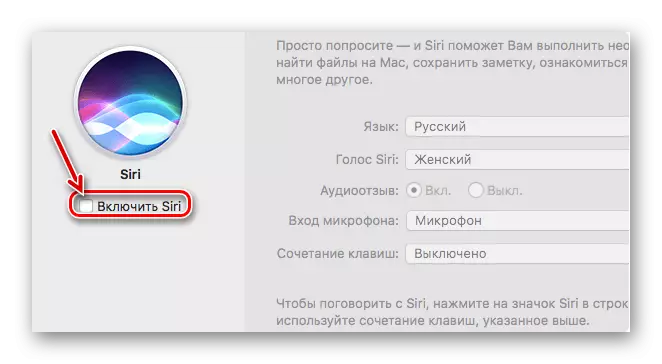
This is so easy you can "remove" the combination of key combinations with Spotlight or Siri and use them exclusively for changing the language layout.
Option 2: Changing the operating system language
Above, we told in detail about switching a language in MacOS, or rather, about changing language layouts. Then we will discuss how you can change the language of the operating system interface as a whole.
Note: As an example, the macos will be shown below the English default.
- Call Apple menu and click it on System Preferences (System Settings).
- Further, in the parameter menu that opens, click on the icon with the signature "Language & Region" ("Language and Region").
- To add the required language, press the button in the form of a small plus.
- From the displayed list, select one or more languages you want to be used herein within the OS (specifically its interface). Click on its name and click the "Add" button.
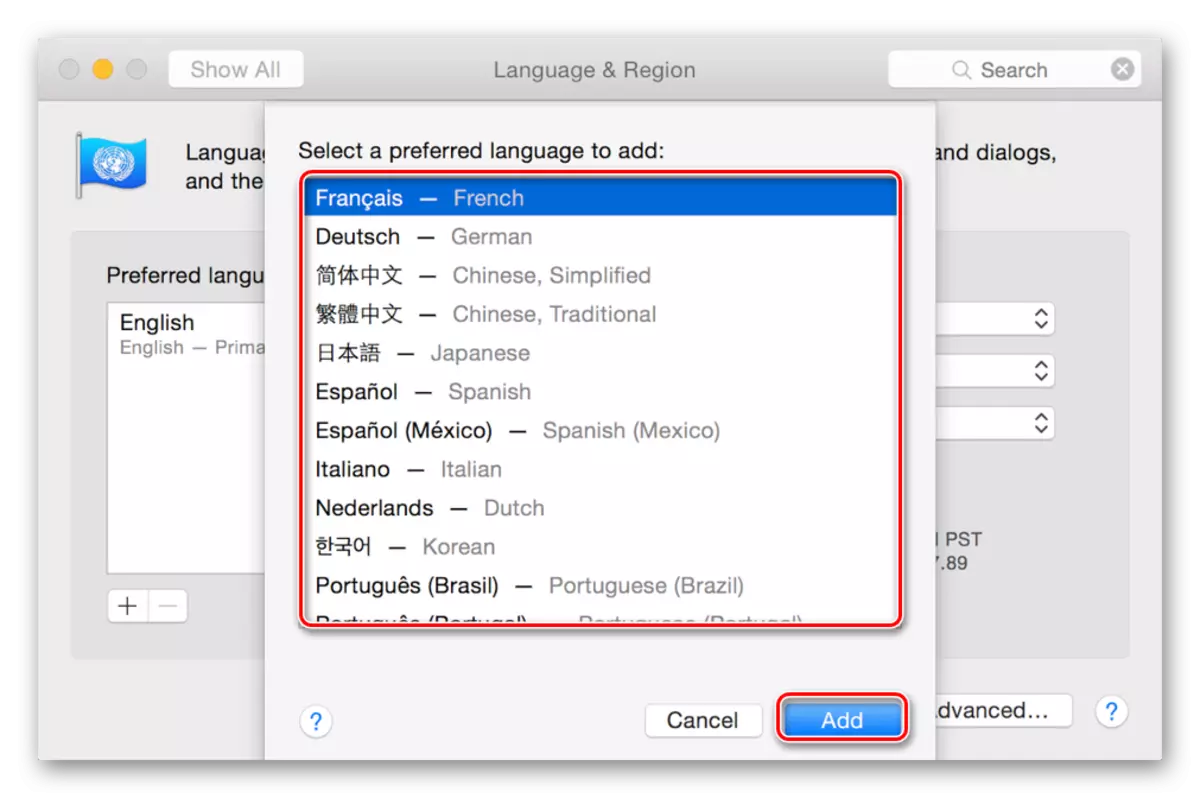
Note: The list of applicable languages will be divided by the line. There are languages that are fully supported by MacOS - the entire system interface, menus, messages, sites, applications will be displayed on them. Under the line there are incomplete support languages - they can be applied to compatible programs, their menus and messages displayed. Perhaps with them some websites will work, but not the whole system.
- To change the main language Makos simply pull it back to the top of the list.
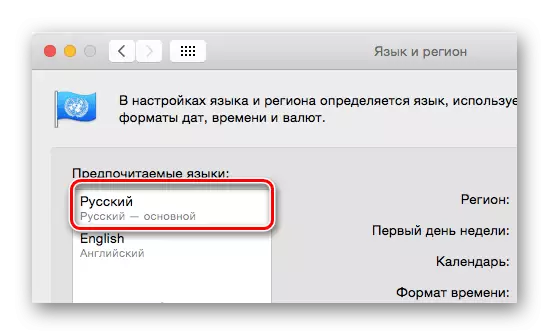
Note: In cases where the system does not support the language that was selected by the main one, the next list will be used instead.
As can be seen in the image above, along with the movement of the selected language to the first position in the list of prefers, the entire system has changed.
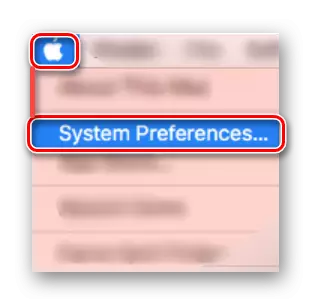
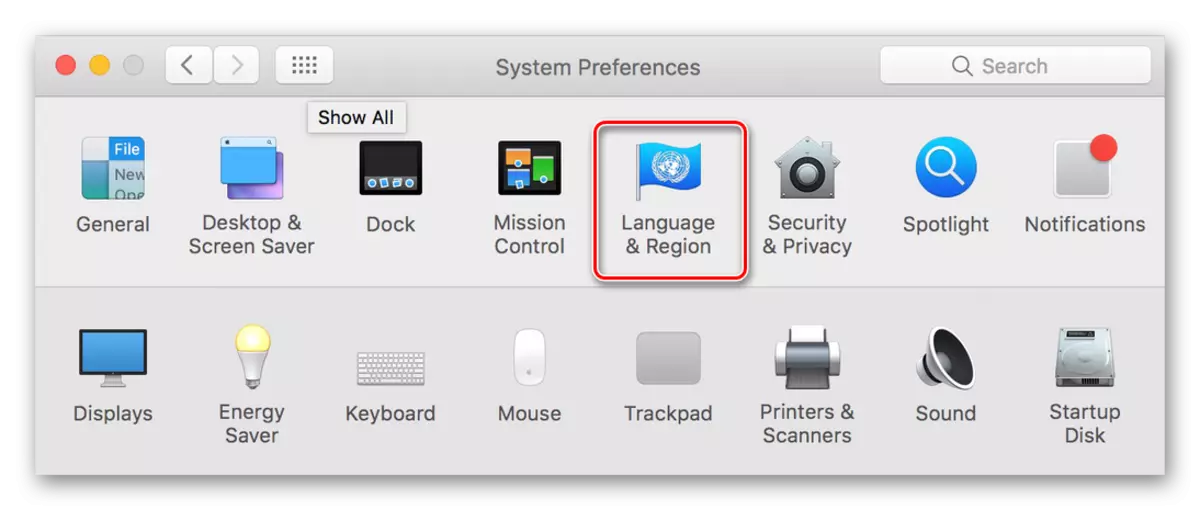
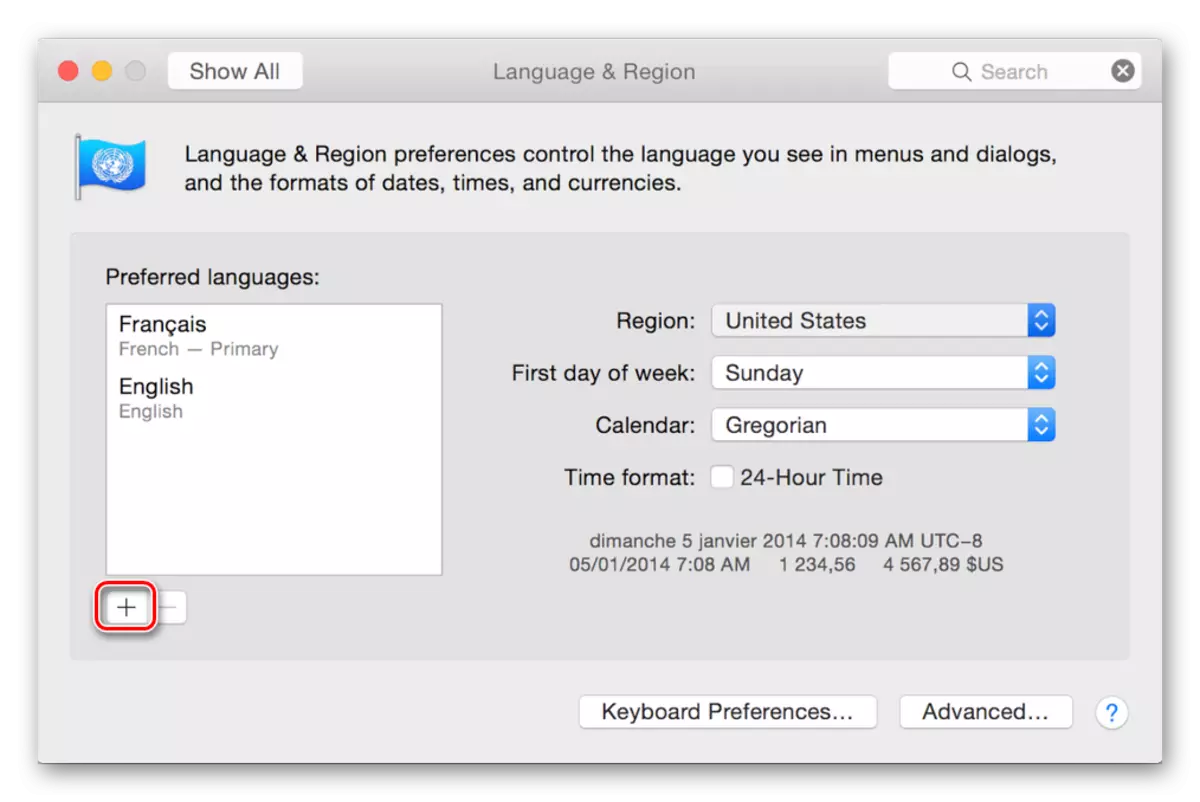
Change the language of the interface in MacOS, as it turned out, is even easier than to change the linguistic layout. Yes, and there are much less problems, they can occur only if the language is established as the main language, but this defects will be fixed automatically.
Conclusion
In this article, we examined in detail two options for switching the language in MacOS. The first implies the change of layout (input language), the second - interface, menus and all other elements of the operating system and the programs installed in it. We hope this material was useful for you.
